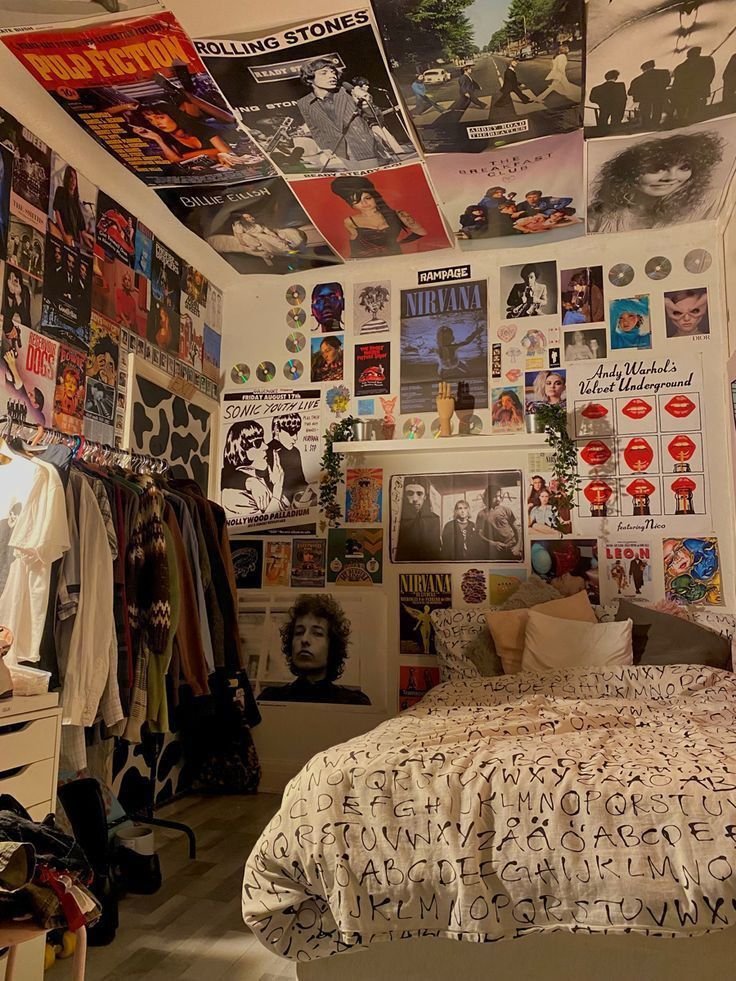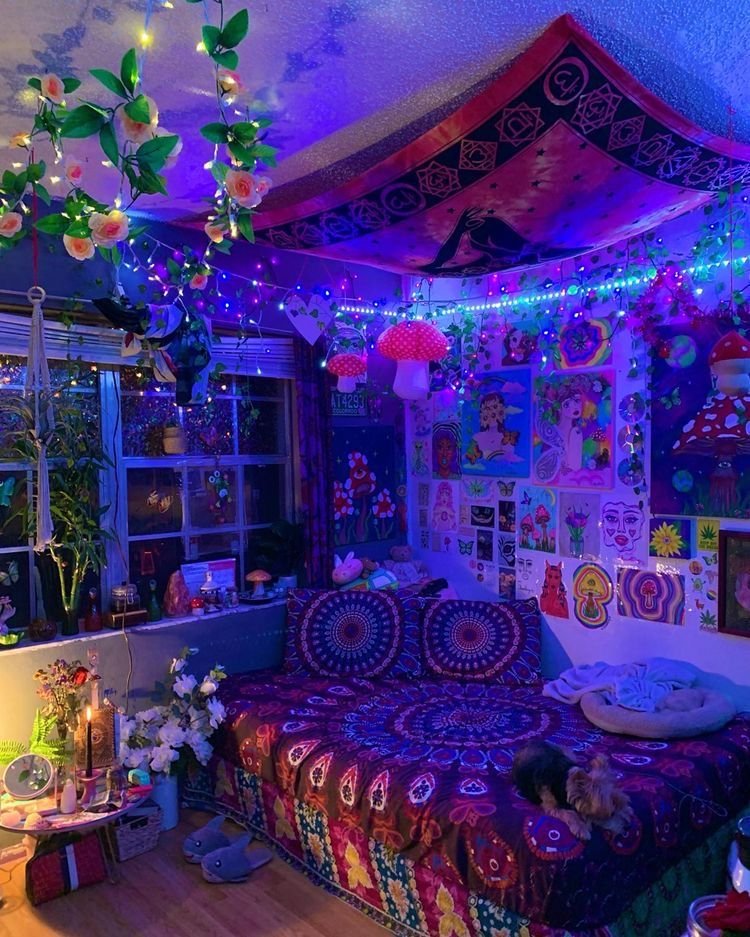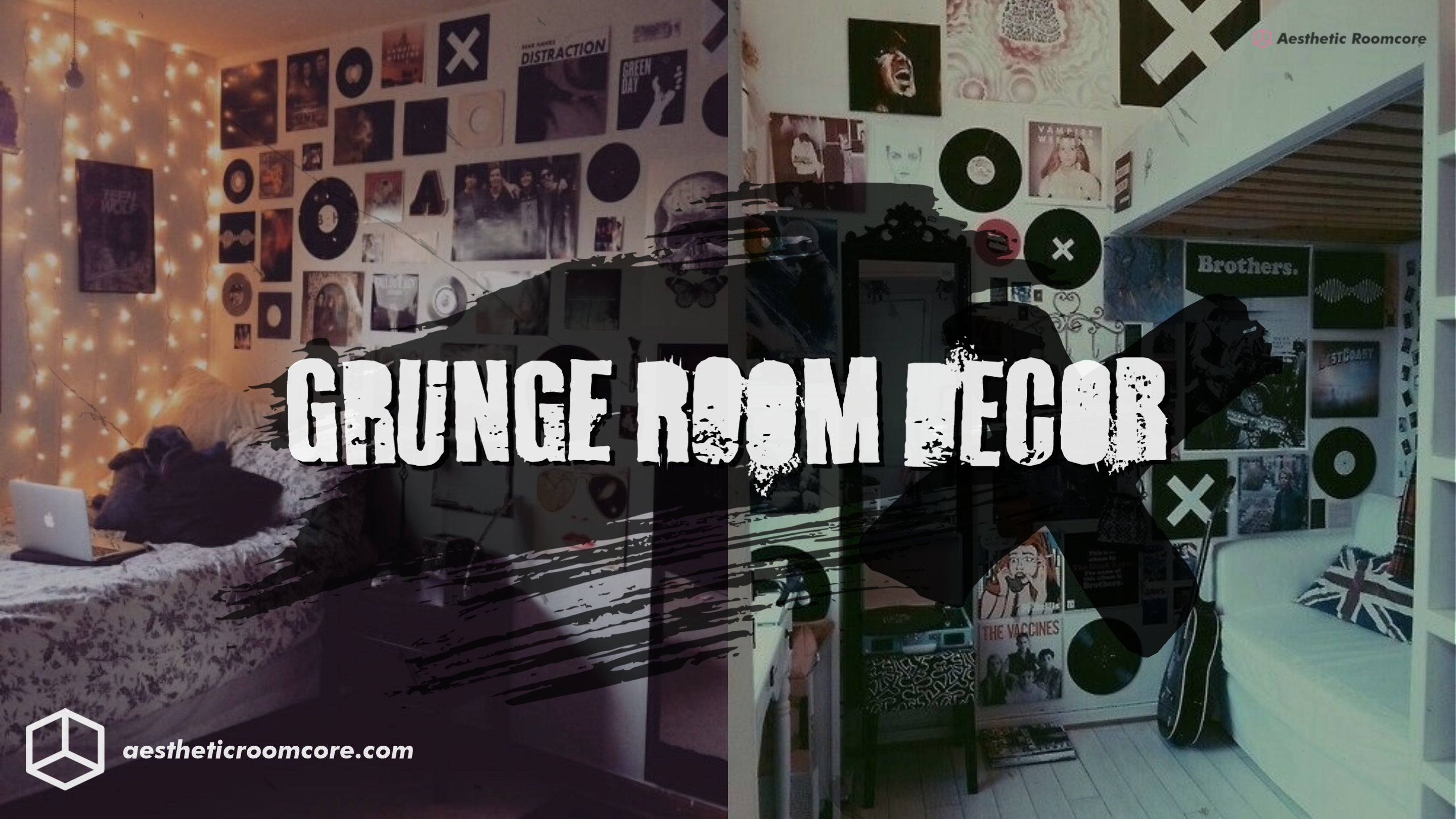Welcome to the eclectic world of grunge room decor! If you’re looking to infuse your living space with a touch of individuality, depth, and a hint of rebellion, grunge might just be the style for you. Having embraced this aesthetic myself, I’ve navigated the peaks and valleys of creating the perfect grunge space, and I’m excited to share my experiences and insights with you. This comprehensive guide will delve into grunge decor’s unique characteristics, offer practical advice, and inspire your decorating journey. So, let’s get started!
What is Grunge Room Decor?
Grunge room decor is inspired by the music and fashion of the 1990s, characterized by its raw, unrefined look. It often incorporates elements like vintage furniture, layered textures, moody colors, and an overall mismatched aesthetic. The essence of grunge is about expressing one’s individuality, often embracing imperfections and a bit of nostalgia.
History of Grunge Aesthetic
The grunge movement emerged in the early 1990s, fueled by influential bands like Nirvana and Pearl Jam. This cultural shift heavily influenced fashion, music, and, of course, interior design. Grunge decor channels the rebellious spirit of that era, creating spaces that feel lived-in and organic.
Key Elements of Grunge Decor

Color Palette
Grunge decor typically features a muted color palette with deep, dark shades. Think charcoal, dark green, burgundy, and navy. These colors create a cozy yet moody ambiance, suitable for creating a sanctuary away from the chaos of life.

Popular Color Combinations
| Primary Color | Accent Color | Effect |
|---|---|---|
| Charcoal | Mustard Yellow | Bold contrast |
| Burgundy | Dusty Rose | Warmth |
| Dark Green | Rusty Orange | Earthy tones |

Materials and Textures
In grunge decor, the use of materials is just as important as the colors. Some key materials include:
- Wood: Reclaimed wood furniture adds warmth and character.
- Metal: Use industrial metal accents for an edgy feel.
- Textile: Layered fabrics like velvet, burlap, and worn cotton create a cozy atmosphere.

Textile Ideas for Grunge Decor
Consider mixing and matching different fabrics for a more dynamic look:
- Throw pillows in various textures
- Vintage quilts or layered blankets
- Rug with a distressed finish

How to Create Your Grunge Room
Step-by-Step Guide

1. Choose a Base Color
Start by selecting a dominant color for your walls. Dark colors often work best but consider lighter shades if you want to keep the space feeling open.
2. Incorporate Vintage Furnishings
Visit thrift stores, flea markets, or online marketplaces to find unique pieces that resonate with the grunge aesthetic. Look for mismatched furniture items or pieces with a history.

3. Add Personal Touches
Display artwork, band posters, or personal memorabilia that reflects your personality. This will make your space feel authentic and uniquely yours.
4. Layer Textures
Keep your room dynamic by layering different fabrics and textures. Combine soft textiles with harder materials like metal or wood to create contrast.
5. Lighting Matters
Soft, warm lighting can enhance the grunge vibe. Consider using vintage lamps, string lights, or candles to create an inviting atmosphere.
Best Furniture Choices for Grunge Decor
Here’s a quick comparison table of furniture types that work well in grunge aesthetics:
| Furniture Type | Pros | Cons |
|---|---|---|
| Reclaimed Wood Furniture | Eco-friendly, unique | Can be expensive |
| Industrial Metal Furniture | Durable, trendy | Can feel cold |
| Vintage Finds | Character, history | May require restoration |
Pros and Cons of Grunge Room Decor
Pros
- Highly personalizable
- Supports sustainability with reused materials
- Invokes a creative and artistic vibe
Cons
- Can feel cluttered if not careful
- May require ongoing effort to maintain uniqueness
- Not everyone may appreciate the aesthetic
DIY Grunge Decor Ideas
Upcycling Furniture
Transform old furniture with a coat of paint, new hardware, or by distressing the wood. Upcycled pieces add character to your room and are often budget-friendly.
Creating Grunge Wall Art
Use found objects, such as old records or fabric scraps, to create wall art. Collages that reflect your interests can add a personal touch to your decor.
Grunge-Inspired Wall Decor
Consider adding removable wallpaper in a distressed pattern or using stencils to create designs that reflect the grunge aesthetic. Here are a few ideas:
- Graffiti-style murals
- Posters of iconic 90s bands
- Framed vintage photos
FAQs About Grunge Room Decor
1. What colors are typical in grunge decor?
Typical colors include dark shades like charcoal, deep green, burgundy, and muted earth tones. These colors create a moody and cozy environment.
2. How can I maintain a grunge room without it looking cluttered?
Focus on key statement pieces that represent your personality. Use storage solutions creatively to organize items while still showcasing your unique style.
3. Are there specific materials I should avoid?
Avoid excessively shiny or modern materials that clash with the grunge aesthetic, such as high-gloss finishes or overly contemporary designs.
4. Is it easy to switch from a modern decor style to grunge?
Yes! Start by introducing grunge elements gradually, like adding vintage pieces, unique colors, and textured fabrics. You can make the transition as subtle or as bold as you’d like.
Conclusion: Your Grunge Journey Awaits
Embracing grunge room decor is about more than just following trends; it’s a way to express who you are. By layering textures, incorporating vintage finds, and curating personal pieces, your unique grunge space will tell your story. It’s an ongoing journey of discovery, and I encourage you to experiment, evolve, and most importantly, have fun with it!
Now that you’re armed with tips and inspiration, it’s time to start creating your dream grunge room. Get out there, explore thrift shops, and unleash your creativity!